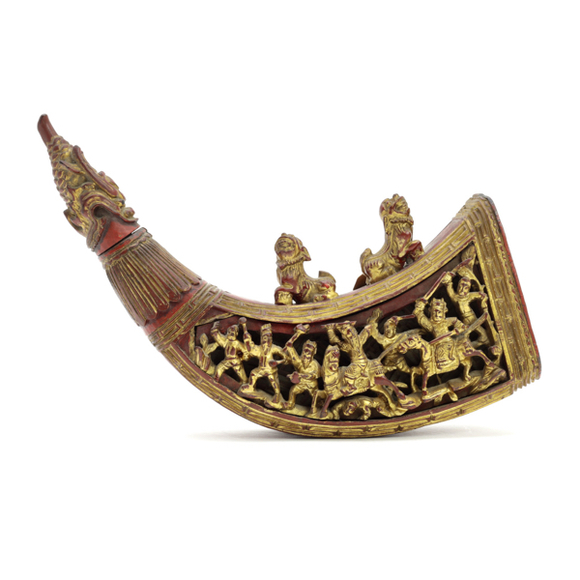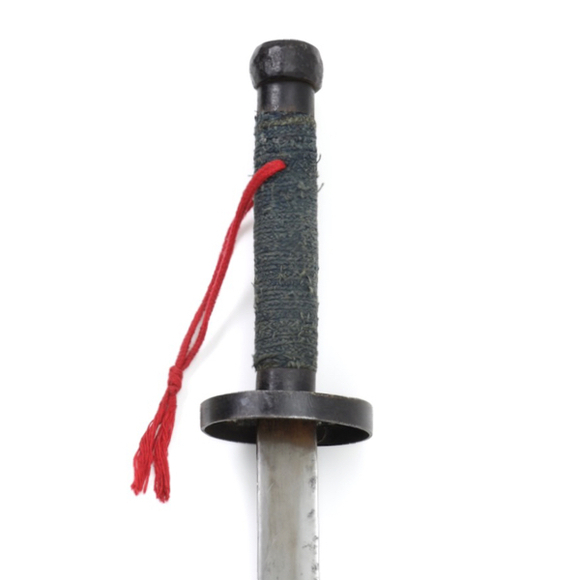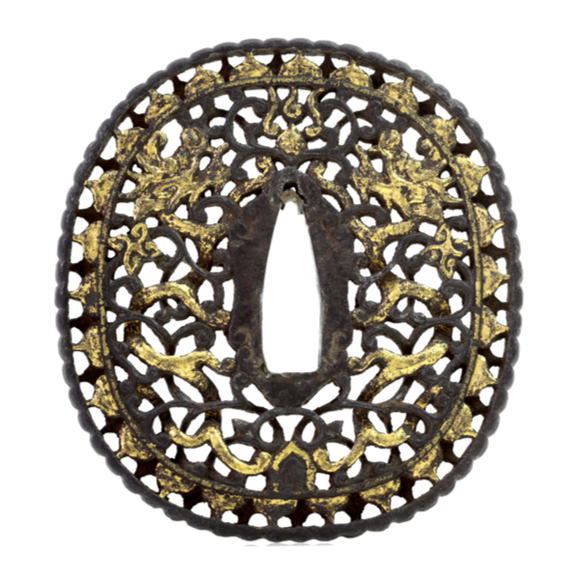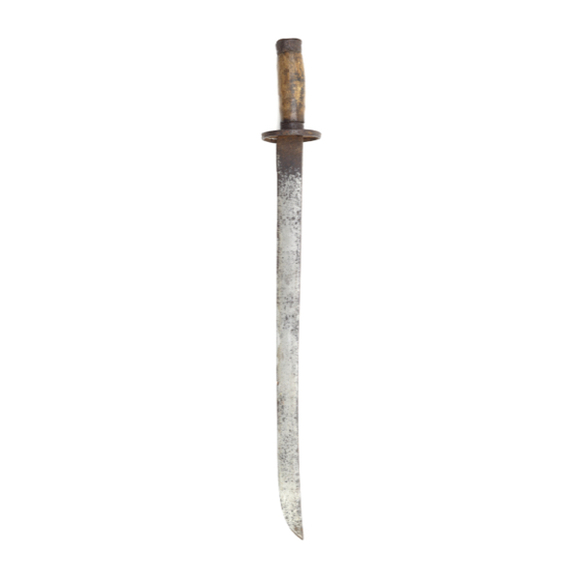Language: Mandarin Chinese
Source: Classical literature
Description
Chūnqiūdāo (春秋刀) or "spring-autumn blade" is an alternative name for the polearm generally described as yǎnyuèdāo (偃月刀), and today is mostly known as Guāndāo (關刀).

Ming woodblock illustration of a yǎnyuèdāo, a.k.a. chūnqiūdāo.
From Chóuhǎi Túbiān (籌海圖編) by Ruozeng Zheng, 1562.
Appearance in Qing literature
The name chūnqiūdāo appears in Qing military texts like the Qīndìng Jūnqì Zélì (欽定軍器則例) or "Imperially commissioned regulations and precedents on military equipment" and Qīndìng Gōngbù Jūnqì Zélì (欽定工部軍器則例) or "Imperially commissioned regulations and precedents on military equipment for the Board of Works", texts that regulate the production and maintenance of military equipment in the 18th and 19th centuries.
The Qīndìng Jūnqì Zélì (欽定軍器則例) regulates the maintenance and production of equipment in all provinces and it uses the name Chūnqiūdāo (春秋刀) in some instances and yǎnyuèdāo (偃月刀) in others, probably reflecting regional preferences.
The Qīndìng Gōngbù Jūnqì Zélì only treats the chūnqiūdāo but describes its manufacture in such great detail that we know it to be identical to the yǎnyuèdāo as it appears in the 1766 woodblock version of the Huangchao Liqi Tushi (皇朝禮器圖式).

Left a page from the 1766 Huangchao Liqi Tushi.
Right a page from the 1815 Junqi Zeli.
From the above, we can conclude that chūnqiūdāo is synonymous to yǎnyuèdāo in the Qing, and it was a name apparently used enough to use it in official texts dealing with manufacture.
This may seem strange, but even the simple saber went by different names, yāodāo (腰刀) and pèidāo (佩刀) where pèidāo seems to be used more by the upper classes and the name yāodāo is more commonly used in more operational writings.
Alternative names
The weapon has gone by many names throughout the course of history, including:
Yǎnyuèdāo (掩月刀): The 11th-century name used in its first appearance.1
Yǎnyuèdāo (偃月刀) or "reclining moon blade" is the most commonly used name for the weapon through history.
Guāndāo (關刀): Appears in a Ming source of the late 16th century.2 Most commonly used name today among martial artists.
Dàdāo (大刀): In some Ming military and martial arts treatises of the early 17th century.3
Chūnqiūdāo (春秋刀): In some Qing military regulations of the 19th century.4
Qīnglóng yǎnyuèdāo (青龍偃月刀): A mythical version of the weapon wielded by Guan Yu in Romance of the Three Kingdoms.5
Notes
1. Wujing Zongyao (武經總要) or "Complete Essentials for the Military Classics" written between 1040-1044.
2. Liu Xiaozu; Sì Zhèn Sān Guān Zhì (四鎮三關誌) or “Record of four Towns and three Passes”, published between 1574 - 1576. The author was deputy commander of an important northern strategic outpost along the Great Wall.
3. Jing Guo Xiong Luo (經國雄略) of 1585, and Cheng Zi Yi (程子頤); dàdāo (大刀), published in the Wubei Yaolue (武備要略) of 1636. Chapter 8.
4. Gongbu Junqi Zeli (工部軍器則例) of 1815.
5. Sanguozhi Tongsu Yanyi (三國志通俗演義) or "The Romance of the Three Kingdoms". Attributed to Luo Guanzhong who lived somewhere between 1315 - 1400. The first official printed edition of the work was in 1522 with a preface date of 1494.
Further reading
For an elaborate article, see: yǎnyuèdāo.






